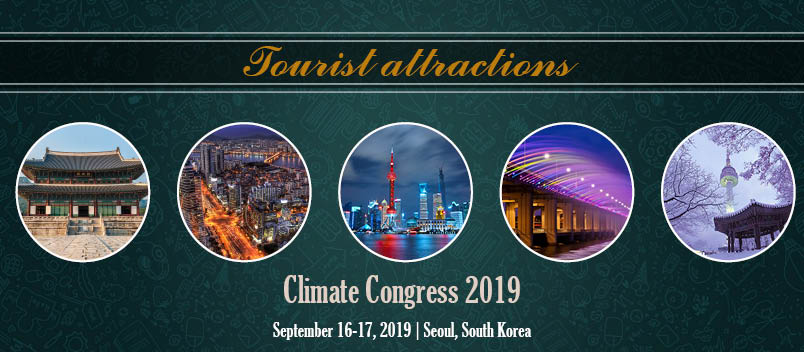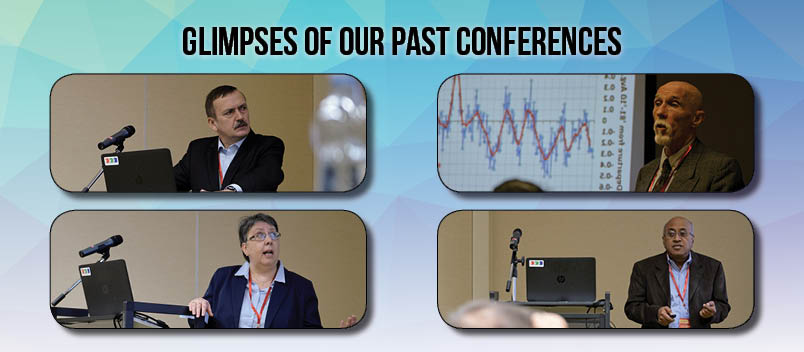Climate Congress 2019
INVITATION
On behalf of Euroscicon we are glad and privileged to invite you to join the 4th Global Summit on Climate Change which is going to be held in Seoul, South Korea on September 16-17, 2019.
The theme of the conference is aiming to promote quality research and real-world impact in an atmosphere of true international cooperation between scientists by bringing together again the world class researchers, International Communities and Industrial heads to discuss the latest developments and innovations in the fields of Climate Change.
During this conference will have the opportunity to interact with more than 50 world-renowned speakers in the field of Climate Change, sharing their expertise and experiences.
Seoul is an exceptional location for the conference. It is the largest and the most populous city of South Korea.
Climate Congress 2019 will provide a wonderful forum for you to refresh your knowledge base and explore the innovations in Climate Change. The Conference will strive to offer plenty of networking opportunities, providing you with the opportunity to meet and interact with the leading scientists and researchers, friends and colleagues as well as sponsors and exhibitors.
Climate Change Exhibition will provide valuable opportunity to retailers and manufacturers within the industry in Middle-East to share their products and technologies with worldwide manufactures and industry specialists.
We hope your experience in 4th Global Summit on Climate change will be outstanding. Our expectations that each candidate will return home and carry the valuable knowledge he acquired in these two days into a new successful practice for many years to come!
With best wishes,
Organizing Committee
About Conference
Theme: An insider's View of Climate Science for a Sustainable Future
Climate Congress 2019 is hosted by EuroSciCon and it is focuses on the major issues of global warming and its effect on the climate. This is of great concern in future as we are facing lots of risks on survival in the earth. It is essential to take necessary action at the earliest else it would lead to irreversible changes to the environment we live in. So we invite Researchers, Climatologist, Environmentalists, Academicians, Industrialists and Social Activists to give a better solution to reverse the damage caused. The conference will be a platform to present your ways and ideas to lessen the adverse effects of Climate Change and to bring back the glory of nature. The conference is scheduled on September 16-17, 2019 in Seoul, South Korea. We invite students and social activists to showcase your ideas as a project, display it in the expo and make your ideas reach the public.
What’s New
Climate Change 2019 includes international attendee exhibitions, workshops, lectures and symposia including a designated registration area, a refreshment break and gala lunch. Environmentalists and Climatologist can join the EuroSciCon as an international member to receive discounts on registration. So come and join leading experts and allied professionals from September 16-17, 2019 in Seoul, South Korea to keep up with the rapidly accelerating pace of climate change that is already having an impact on the environment.
About Seoul
Seoul, officially the Seoul Special City, is the capital and largest metropolis of South Korea. With surrounding Incheon metropolis and Gyeonggi province, Seoul forms the heart of the Seoul Capital Area, home to roughly half of the country's population. Seoul is ranked as the fourth largest metropolitan economy in the world and is larger
Strategically situated on the Han River, Seoul's history stretches back over two thousand years, when it was founded in 18 BCE by the people of Baekje, one of the Three Kingdoms of Korea. The city has later designated the capital of Korea under the Joseon dynasty. Seoul is surrounded by a mountainous and hilly landscape, with Bukhan Mountain located on the northern edge of the city. As with its long history, the Seoul Capital Area contains five UNESCO World Heritage Sites: Changdeok Palace, Hwaseong Fortress, Jongmyo Shrine, Namhansanseong and the Royal Tombs of the Joseon Dynasty. More recently, Seoul has been a major site of modern architectural construction – major modern landmarks include the N Seoul Tower, the 63 Building, the Lotte World Tower, the Dongdaemun Design Plaza, Lotte World, Trade Tower, COEX, and the Parc1 Tower. Seoul was named the 2010 World Design Capital. As the birthplace of K-pop and the Korean Wave, Seoul received over 10 million international visitors in 2014, making it the world's 9th most visited city and 4th largest earner in tourism.
Today, Seoul is considered a leading and rising global city, resulting from a South Korean economic boom called the Miracle on the Han River, which transformed it to the world's 7th largest metropolitan economy with a GDP of US$635.4 billion in 2014 after Tokyo, New York City and Los Angeles. International visitors generally reach Seoul via AREX from the Incheon International Airport, notable for having been rated the best airport for nine consecutive years (2005–2013) by the Airports Council International. In 2015, it was rated Asia's most livable city with the second highest quality of life globally by Arcadis, with the GDP per capita (PPP) in Seoul being $39,786. Inhabitants of Seoul are faced with a high cost of living, for which the city was ranked 6th globally in 2017. Seoul is also an extremely expensive real estate market, ranked 5th in the world for the price of apartments in the downtown centre. With major technology hubs centred in Gangnam and Digital Media City, the Seoul Capital Area is home to the headquarters of 15 Fortune Global 500 companies, including Samsung, LG, and Hyundai. Ranked sixth in the Global Power City Index and Global Financial Centres Index, the metropolis exerts a major influence in global affairs as one of the five leading hosts of global conferences. Seoul has hosted the 1986 Asian Games, 1988 Summer Olympics, 2002 FIFA World Cup, and more recently the 2010 G-20 Seoul summit.
Session and Tracks
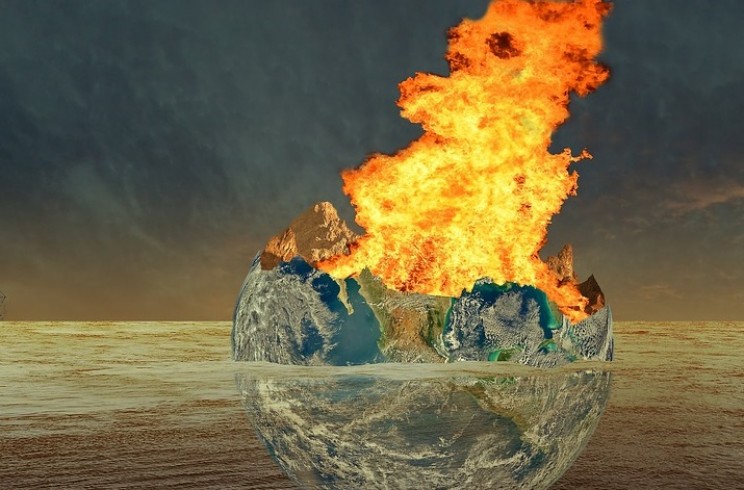
Climatology is imperative since it explains the future climatic expectations. Using scope, one can decide the probability of snow and hail achieving the surface. You can likewise have the capacity to distinguish the warm vitality from the sun that is open to a locale. Climatology is the logical investigation of atmospheres, which is characterized as the mean climate conditions over some undefined time frame. A branch of concentrate inside climatic sciences, it likewise considers the factors and midpoints of here and now and long haul climate conditions. Climatology is not quite the same as meteorology and can be isolated into various regions of study. Different ways to deal with this field can be taken, including paleoclimatology, which centers on the atmosphere through the span of the Earth's presence by analyzing records of tree rings, shakes and silt, and ice centers. Chronicled climatology centers basically around atmosphere changes all through history and the impacts of the atmosphere on individuals and occasions after some time.
Track 2: Global warming effects and causes
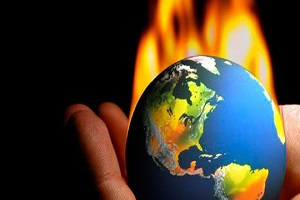
Levels of greenhouse gases (GHGs) have gone up and down over the Earth's history, yet they have been genuinely steady for as long as couple of thousand years. Worldwide normal temperatures have also remained constant up to this point. Through the consuming of fossil fuels and other GHG discharges, people are improving the greenhouse impact and warming Earth. Researchers frequently utilize the expression "climatic change" rather than a dangerous atmospheric deviation. This is on the grounds that as the Earth's normal temperature ascensions, winds and ocean streams move warm the world over in ways that can cool a few regions, warm others, and change the measure of rain and snow falling. Accordingly, the atmosphere changes contrastingly in various regions.
Track 3: Ecology and ecosystems
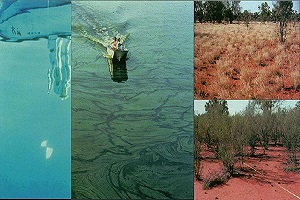
The biosphere has been greatly altered by the demands of human societies. Ecosystem ecology plays an important role in understanding and adapting to the most pressing current environmental problems. Restoration ecology and ecosystem management are closely associated with ecosystem ecology. Restoring highly degraded resources depends on integration of functional mechanisms of ecosystems. Ecosystem ecology provides the basic science needed to avoid degradation and to restore ecosystem processes that provide for basic human needs.

Climate prediction is like numerical weather prediction, yet the estimates are for longer periods. Uncommon numerical models are utilized to modify follow atmospheric gases (carbon dioxide and methane, for instance), ocean ice and icy mass cover, changes in approaching sun based radiation, and a large group of different parameters. A numerical portrayal of the atmosphere framework deals in light of the physical, synthetic and organic properties of its parts, their connections and criticism procedures, and representing all or a portion of its known properties. The atmosphere framework can be spoken to by models of shifting multifaceted nature, that is, for any one segment or blend of parts a range or chain of importance of models can be recognized, varying in such angles as the quantity of spatial measurements, the degree to which physical, synthetic or organic procedures are expressly spoken to, or the level at which exact parameterizations are included.

Because of Climate Change, frequencies of outrageous climate occasions, for example, floods, heat waves and drought are relied upon to increase in future. Climatic risks are operators of calamity regarding what they may do to human settlements or to nature. Possibly dangerous air wonders incorporate tropical twisters, electrical storms, tornadoes, dry season, rain, hail, snow, lightning, mist, wind, temperature extremes, air contamination, and climatic change. Recognizable proof of dangerous occasions isn't generally simple, albeit certain criteria are normally present. They incorporate property harm; financial loss, for example, loss of income or an end underway; significant interruption of social administrations, including communication disappointments; over the top strain on basic administrations.
Track 6: Urbanization and flooding
The changes in land use related with urban advancement influence flooding from various perspectives. Evacuating vegetation and soil, evaluating the land surface, and developing waste systems increment overflow to streams from precipitation and snowmelt. Accordingly, the pinnacle release, volume, and recurrence of floods increase in adjacent streams. Changes to stream channels amid urban improvement can restrain their ability to pass on floodwaters. Streets and structures built in surge inclined regions are presented to expanded surge perils, including immersion and disintegration, as new improvement proceeds. Data about stream and how it is influenced via arrive utilize can enable groups to lessen their present and future defenselessness to floods.
Track 7: Indications of climate change
The Earth's atmosphere is evolving. Temperatures are rising, snow and precipitation designs are moving, and more outrageous atmosphere occasions – like substantial rainstorms and record high temperatures – are now happening. A considerable lot of these watched changes are connected to the rising levels of carbon dioxide and other ozone harming substances in our climate, caused by human exercises. Atmosphere researchers are 95 percent sure that the ozone depleting substance discharges from human exercises are making the environmental change. From 1901-2012, temperatures have risen 1.6°F. While this temperature change is the most normally referred to environmental change pointer, there are various others that additionally indicate what environmental change resembles. They run from rising oceans to liquefying icy masses and ice sheets to evolving ecosystem.
Environmental change is principally an issue of an excessive amount of carbon dioxide (CO2) in the air. This carbon over-burden is caused primarily when we consume petroleum derivatives like coal, oil and gas or chop down and consume timberlands. There are numerous warmth catching gases (from methane to water vapor), yet CO2 puts us at the most serious danger of irreversible changes in the event that it keeps on aggregating unabated in the air. People have expanded climatic CO2 fixation by in excess of a third since the Industrial Revolution started. This is the most imperative driving of environmental change. It retains less warmth per particle than the ozone depleting substances methane or nitrous oxide, yet it's more copious and it remains in the environment any longer. And keeping in mind that carbon dioxide is less plentiful and less capable than water vapor on a particle for each atom premise, it ingests wavelengths of warm vitality that water vapor does not, which implies it adds to the nursery impact remarkably.
Track 9: Climate change – Challenges

Research on future scenarios predict climate change will have a dramatic effect on natural environments, plants and animals, leading to acceleration in biodiversity loss in some areas. The impacts will have knock-on effects for many communities and sectors that depend on natural resources, including agriculture, fisheries, energy, tourism and water. It may aggravate erosion, decline in organic matter, salinization, soil biodiversity loss, landslides, desertification and flooding. The effect of climate change on soil carbon storage can be related to changing atmospheric CO2 concentrations, increased temperatures and changing precipitation patterns. It also affects the biodiversity.
Track 10: Ocean & Climate change

The oceans cover seventy five percent of the Earth's surfaces and it is a fundamental part in the worldwide atmosphere framework, producing oxygen and engrossing carbon dioxide from the environment. Changes to the atmosphere, achieved by expanding levels of ozone depleting substances in the climate, will accordingly prompt changes in the seas, including ocean level ascent and sea fermentation, which will put marine biological systems and beach front groups in danger. The seas are encountering significant worry from environmental change. Universally, the ocean level has ascended by 20 centimeters since the beginning of the twentieth century, due for the most part to warm development of the seas and softening of icy masses and ice tops. A few districts are encountering significantly more noteworthy ocean level ascent. General warming patterns, gigantic scenes of coral dying, fermentation and the ocean level ascent are influencing ecosystems in all areas, debilitating fisheries, natural pecking orders and the seas' capacity to go about as proficient carbon sinks.
Track 11: Pollution and its effects
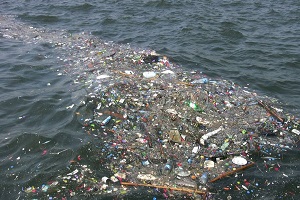
Air pollution and climate change are firmly related. The fundamental sources of CO2 emissions – the extraction and copying of petroleum derivatives – are key drivers of environmental change, as well as significant wellsprings of air poisons. Moreover, numerous air toxins that are hurtful to human wellbeing and biological systems likewise add to environmental change by influencing the measure of approaching daylight that is reflected or consumed by the air, with a few poisons warming and others cooling the Earth. These short-lived climate-forcing pollutants (SLCPs) incorporate methane, dark carbon, ground-level ozone, and sulfate pressurized canned products. They affect the atmosphere; dark carbon and methane specifically are among the best supporters of a dangerous global warming after CO2.
Track 12: Space monitoring of climate variable
Climate change is related with earth radiation spending that relies on in-coming sunlight based radiation, surface albedo and radiative constraining by ozone depleting substances. Human exercises are adding to environmental change by causing changes in Earth's air (ozone depleting substances, pressurized canned products) and biosphere (deforestation, urbanization, water system). Long haul and exact estimations from adjusted worldwide perception heavenly body is a fundamental part in atmosphere framework demonstrating. Space based records of biosphere, cryosphere, hydrosphere and environment over three decades are giving imperative data on environmental change. Space perceptions are an essential wellspring of atmosphere factors due to multi scale synchronous perception (nearby, provincial, worldwide) capacity with transient return to tuned in to necessities of land, sea and climatic procedures. Essential climatic variables that can be measured from space include atmosphere (upper air temperature, water vapour, precipitation, clouds, aerosols & GHGs etc.), ocean (sea ice, sea level, salinity, ocean colour etc.) and land (snow, glacier, albedo, biomass, soil moisture etc.).
Track 13: Health and Climate changes
A changing climate impacts our health and prosperity. The significant public health associations of the world have said that environmental change is a basic health issue. Environmental change makes numerous current infections and conditions more awful, however it might likewise help bring new vermin and pathogens into new areas or groups. As the planet warms, seas extend and the ocean level ascents, surges and dry seasons turn out to be more regular and extraordinary, and warm waves and tropical storms turn out to be more serious. The most helpless individuals—kids, the elderly, poor people, and those with fundamental wellbeing conditions—are at expanded hazard for wellbeing impacts from environmental change. Environmental change additionally focuses on our human services foundation and conveyance frameworks. Steps can be taken to diminish environmental change and decrease its effects on our wellbeing and the strength of our future generations.
Track 14: Impacts & Risk Analysis
Climate change might be a factor prompting expanded dangers of food and waterborne diseases from utilization of existing and rising natural risks. It is advantageous to create coordinated ways to deal with assess, and give logical appraisals of potential environmental change adjustment measures to illuminate chance administration identified with atmosphere and climate occasions. Cities are facing increasing risks from flooding caused by extreme precipitation events, making housing, traffic, health, ecosystems and cultural and historical heritage vulnerable. Accordingly, planning adaptation measures has become a high priority for local government authorities and property owners in cities. However, the cost-effective planning of adaptation strategies is very complicated. The integrated assessment of climate events, associated flooding, damage costs and adaptation measures requires multidisciplinary work and close interaction between professionals and decision-makers. Damage cost assessments and adaptation planning also require context-specific data and modeling, which, taken together, can be very demanding in seeking to develop a basis for solid local decision-making.
Climate change risk management approaches generally fall into four broad categories: mitigation—efforts to reduce greenhouse gas emissions; adaptation—increasing society’s capacity to cope with changes in climate; geo engineering or climate engineering—additional, deliberate manipulation of the earth system that is intended to counteract at least some of the impacts of greenhouse gas emissions; and knowledge-based expansion—efforts to learn and understand more about the climate system, which can help support proactive risk management.
Track 16: Climatic change laws and policies
Climate legislation is legislation dealing with the laws and regulations of greenhouse gas emissions. Many different pieces of climate legislation have been introduced and are being considered by legislatures around the world. Laws and congressionally approved funding have led to new programs to reduce emissions and incentives to speed the deployment of clean energy. We must immediately adopt the many legal and technological tools available today to greatly reduce greenhouse pollution. But that's only one piece of the puzzle. Deeper changes to remove structures that favor extractive, polluting industries and other forms of inequality are also urgently needed.
Track 17: Climate Change Economics

The economics of climate change refers to the study of the economic costs and benefits of climate change, along with the economic impact of actions aimed at limiting its effects. Initially most economics research on climate change employed simple cost-benefit analyses framed by two key questions: the potential costs of cutting greenhouse-gas emissions and if such reductions be achieved without sacrificing economic output. In other words: do the costs of climate change prevention outweigh its possible benefits, or vice-versa
Track 18: Solutions for Climate change
There is no specific solution for mitigating the effects of Climate change. Boosting energy efficiency, greening transportation, revving up renewables, phasing out fossil fuel electricity, managing forests and agriculture, exploring nuclear power, developing and deploying new low-carbon and zero-carbon technologies, ensuring sustainable development and adapting to changes already underway are all needed to bring down the emissions of these gases by at least 80 percent by mid-century.

The terms “go green” can be interpreted in many ways but overall, it means to create a cleaner and healthier environment not just for our generation but also for the generations to come. Protecting the planet in any way we can, will help to build a better future. The four most basic but important reasons to go green are reducing harmful pollution, conserving energy and resources, protecting the earth's ecological balance and reducing consumption and waste.
Track 20: Biodiversity and Species Protection

The numerous segments of environmental change are foreseen to influence every one of the levels of biodiversity, from living being to biome levels. They basically concern different qualities and types of wellness diminish, which are communicated at various levels, and have consequences for people, populaces, species, biological systems and environments. And no more essential levels of biodiversity, environmental change can diminish hereditary assorted variety of populaces because of directional choice and quick relocation, which could thusly influence biological system working and strength.
Track 21: Nuclear safety and Radiological protection
The safe and ecologically stable administration of lighted fuel components from atomic power plants, of radioactive buildups exuding from atomic power, the decommissioning of atomic offices, industry, pharmaceutical and research is a crucial essential for the utilization of radioactive material. Radiation can be hurtful to people and to the earth. In this way, constrain values are set to keep away from any irrefutable harm. Though past directions just secured man-made radiation however the new Radiation Protection additionally incorporates raised levels of radiation from common sources.
Track 22: Renewable energy as an alternative
Energy use is evolving quick. The move to sustainable sources, in any case, needs to happen quicker, not simply in control age but rather in warming, structures and transport, to check the ascent in worldwide temperatures. Renewables could supply four-fifths of the world's power by 2050, hugely slicing carbon discharges and moderating environmental change. In any case, sun oriented and wind control must be completely incorporated, with economical bioenergy giving another key piece of the blend. This implies accelerating advancement in business and innovation. Above everything, it implies making a move to advance sustainable power source today.
Track 23: Future aspects of Climate Change
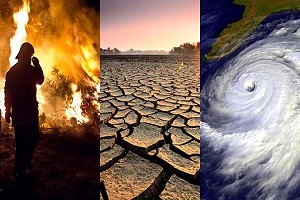
Global climate is anticipated to keep on changing over this century and past. The size of environmental change past the following couple of decades depends basically on the measure of warmth catching gases discharged internationally, and how delicate the Earth's atmosphere is to those emanations. A specific measure of kept warming of the planet is anticipated to happen because of human-incited outflows to date; another 0.5°F increment would be normal throughout the following couple of decades regardless of whether all emanations from human exercises abruptly ceased, albeit common changeability could in any case assume an essential part finished this day and age. In any case, decisions made now and in the following couple of decades will decide the measure of extra future warming. Past mid-century, bring down levels of warmth catching gases in situations with decreased discharges will prompt detectably less future warming. Higher emanations levels will bring about all the more warming, and consequently more serious effects on human culture and the common world.
Track 24: Conservation of resources
Management of the human utilization of characteristic assets to give the greatest advantage to current ages while keeping up ability to address the issues of who and what is to come. Preservation incorporates both the security and sane utilization of regular assets. Various advances are being taken to enhance asset protection in oversaw biological systems. Impressive logical research has been embraced to better comprehend the characteristic changeability and profitability of monetarily critical assets. Numerous national and nearby governments have sanctioned controls for asset administration rehearses on open and private grounds. In some of areas, programs as of late have been set up either to include nearby groups who have a more noteworthy impetus to oversee for long haul generation all the more specifically in asset administration choices or to come back to them asset possession rights. Endeavors are under approach to oversee assets on a local or biological system scale utilizing strategies that have come to be known as environment management or bioregional management.
Track 25: Waste management and disposal systems

Waste management or Waste disposal is every one of the exercises and activities required to oversee squander from its initiation to its last transfer. This incorporates in addition to other things, accumulation, transport, treatment and transfer of waste together with checking and direction. It likewise includes the lawful and administrative system that identifies with squander administration enveloping direction on reusing and so on. The education for waste management and pollution is very critical to the perseverance of global health and security of humankind.
Track 26: Rejuvenation of the environment

It is the scientific study supporting the practice of ecological restoration, which is the practice of renewing and restoring degraded, damaged, or destroyed ecosystems and habitats in the environment by active human intervention and action. There is consensus in the scientific community that the current environmental degradation and destruction of many of the Earth's biota is considerable and is taking place on a "catastrophically short timescale. The two ways to reverse this trend of habitat loss are conservation of currently viable habitat and restoration of degraded habitats.

